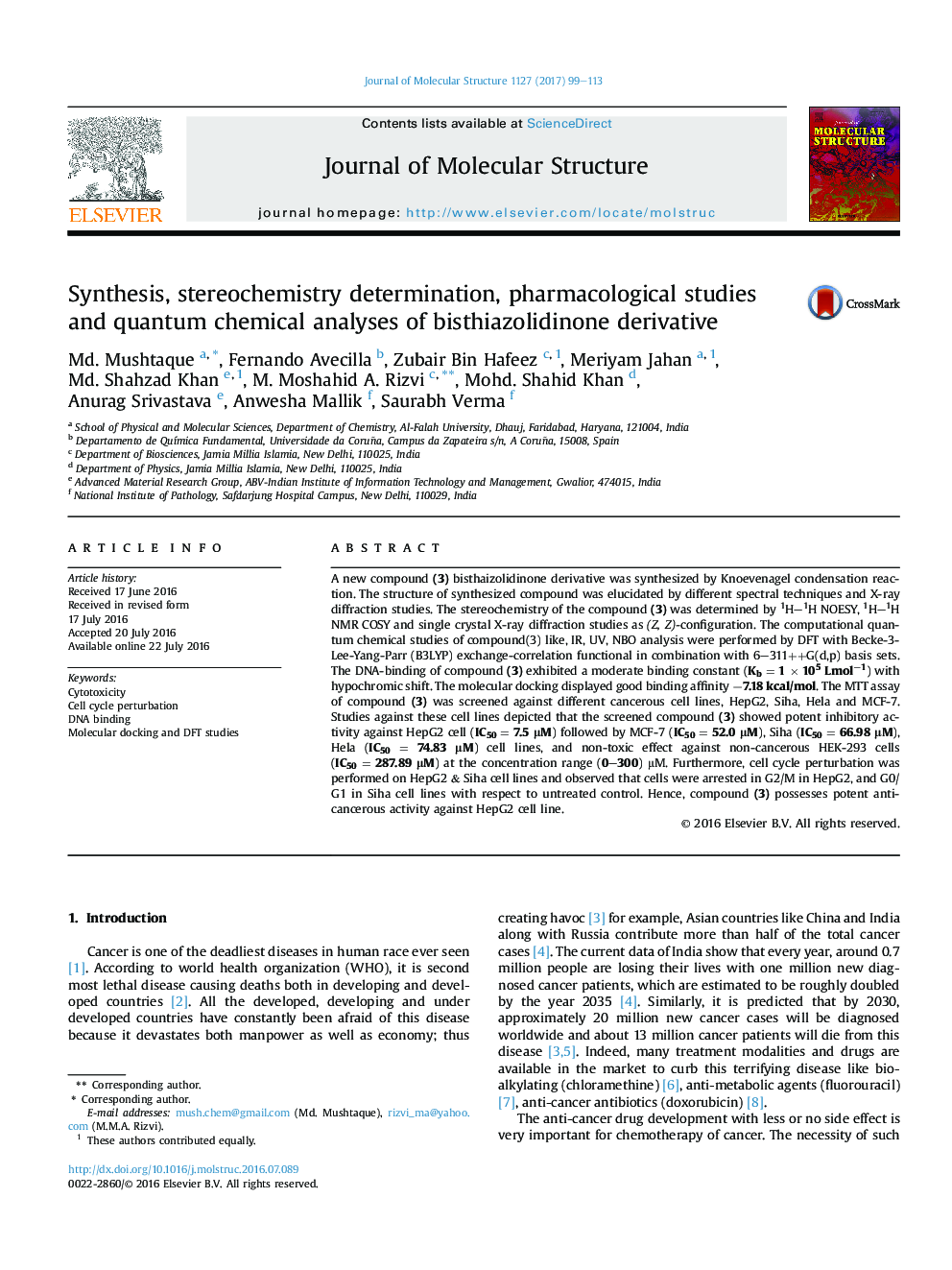| کد مقاله | کد نشریه | سال انتشار | مقاله انگلیسی | نسخه تمام متن |
|---|---|---|---|---|
| 1407513 | 1501690 | 2017 | 15 صفحه PDF | دانلود رایگان |
• Compound (3) adopted (Z, Z)-configuration.
• Energy gap is 2.42 eV.
• Docking energy is −7.18 kcal/mol.
• Compound (3) showed potent activity against HepG2 Cells (IC50 = 7.5 μM).
A new compound (3) bisthaizolidinone derivative was synthesized by Knoevenagel condensation reaction. The structure of synthesized compound was elucidated by different spectral techniques and X-ray diffraction studies. The stereochemistry of the compound (3) was determined by 1H1H NOESY, 1H1H NMR COSY and single crystal X-ray diffraction studies as (Z, Z)-configuration. The computational quantum chemical studies of compound(3) like, IR, UV, NBO analysis were performed by DFT with Becke-3-Lee-Yang-Parr (B3LYP) exchange-correlation functional in combination with 6–311++G(d,p) basis sets. The DNA-binding of compound (3) exhibited a moderate binding constant (Kb = 1 × 105 Lmol−1) with hypochromic shift. The molecular docking displayed good binding affinity −7.18 kcal/mol. The MTT assay of compound (3) was screened against different cancerous cell lines, HepG2, Siha, Hela and MCF-7. Studies against these cell lines depicted that the screened compound (3) showed potent inhibitory activity against HepG2 cell (IC50 = 7.5 μM) followed by MCF-7 (IC50 = 52.0 μM), Siha (IC50 = 66.98 μM), Hela (IC50 = 74.83 μM) cell lines, and non-toxic effect against non-cancerous HEK-293 cells (IC50 = 287.89 μM) at the concentration range (0–300) μM. Furthermore, cell cycle perturbation was performed on HepG2 & Siha cell lines and observed that cells were arrested in G2/M in HepG2, and G0/G1 in Siha cell lines with respect to untreated control. Hence, compound (3) possesses potent anti-cancerous activity against HepG2 cell line.
Figure optionsDownload as PowerPoint slide
Journal: Journal of Molecular Structure - Volume 1127, 5 January 2017, Pages 99–113
